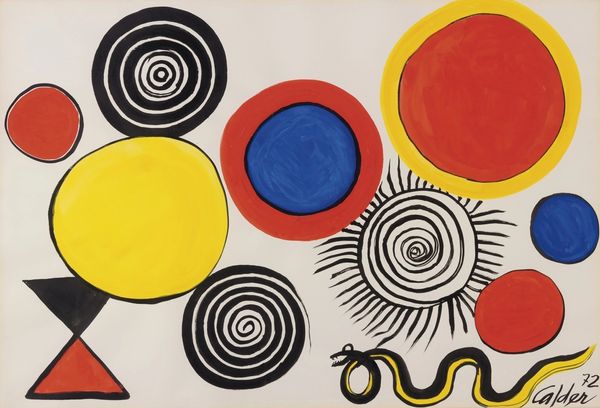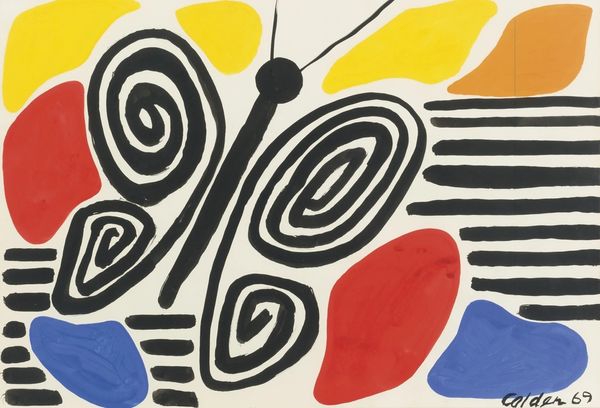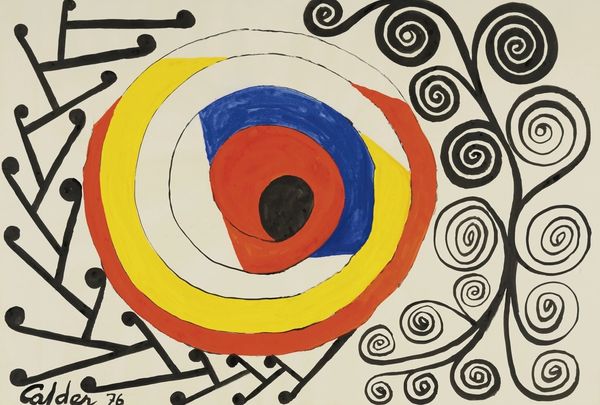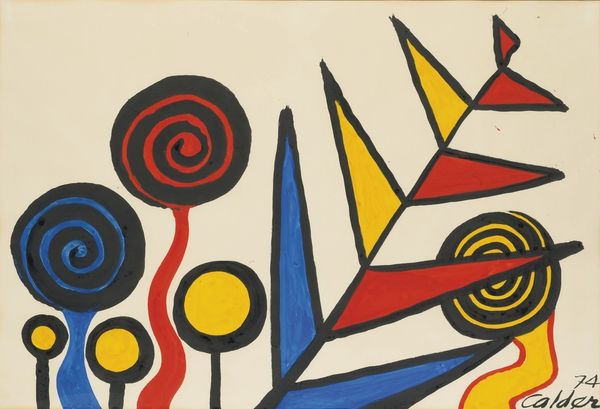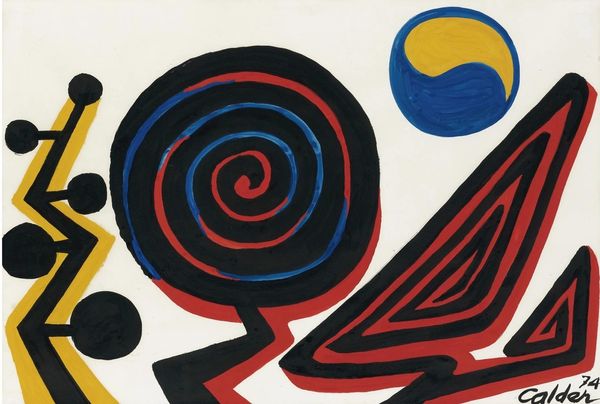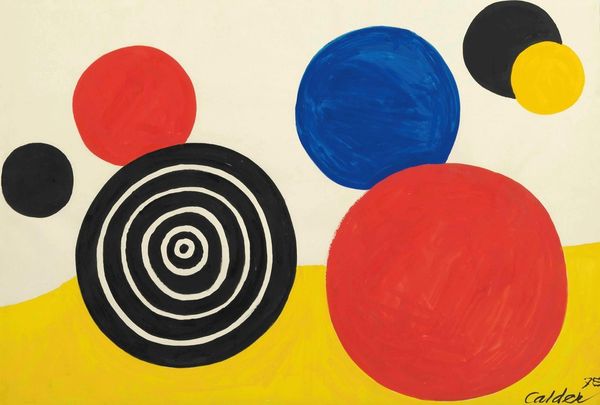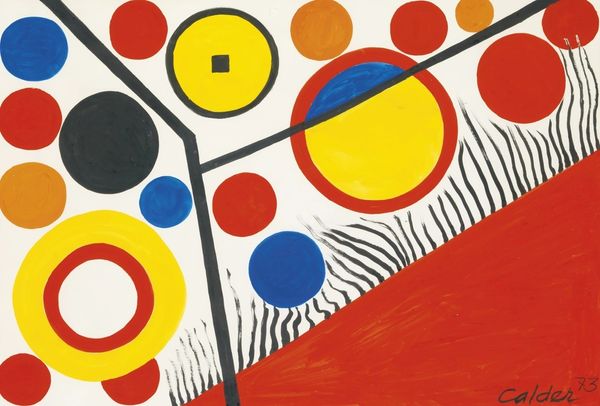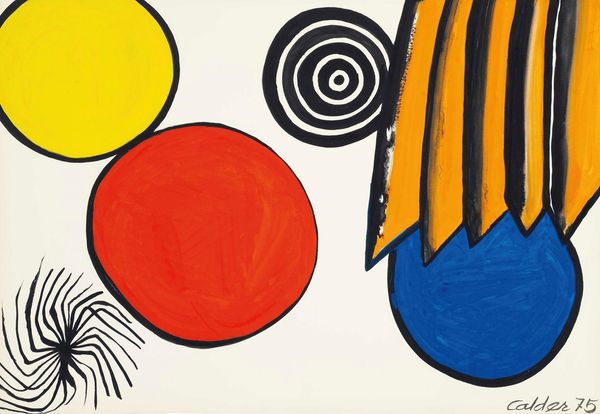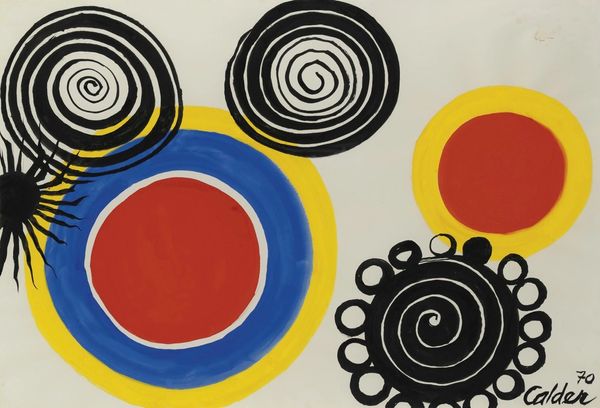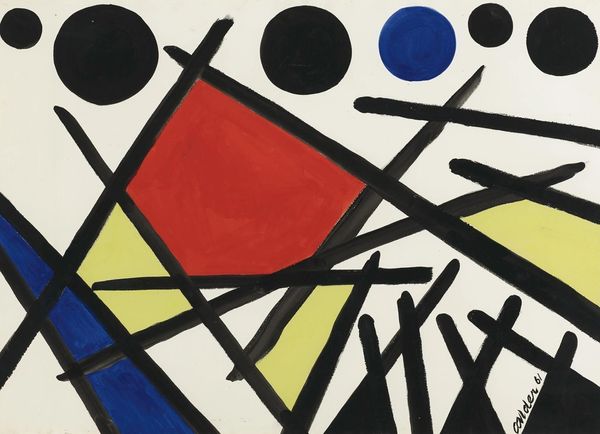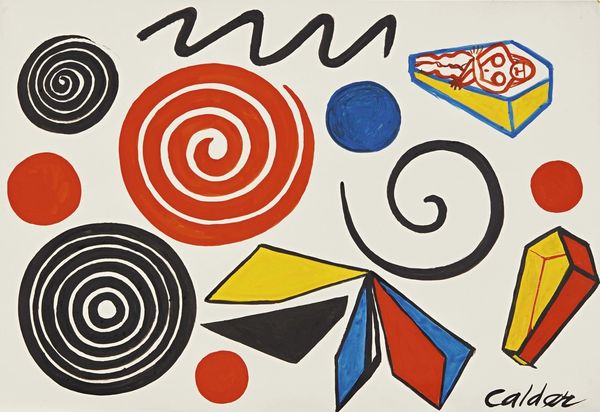
Copyright: Modern Artists: Artvee
Curator: Let's spend some time with Alexander Calder’s "Spirale" from 1972, realized in acrylic. What strikes you first about this piece? Editor: An almost playful arrangement of shapes—bold colors floating, but there’s also a graphic quality...almost like a blueprint abandoned mid-thought. Curator: It does have a deceptive simplicity, doesn't it? Calder, known for his mobiles, explores dynamism in a static form here. There's an inherent tension, a sense that these elements *could* move. The vibrant primary colours, the black accents... it creates a push and pull. Do you read this as Op Art? Editor: Perhaps tangentially. I mean, the flatness of the acrylic paint, the clear outlines—these contribute to its almost manufactured appearance, like signs, mass produced…The way Calder flattens three-dimensional form reminds me of advertisements or commercial products—there is a strong emphasis on the materiality, the 'thingness' of the acrylic on canvas. Curator: That's an interesting take – thinking about industrial aesthetics versus traditional fine art ideals. I get lost in the spirals; a very personal meditation, a quest. One starts drawing inward to what invisible center? One gets pulled away in perpetuity? It’s rather metaphysical. Editor: Calder’s choice of materials democratizes art, making art an accessible, functional item. Think about those bold hues—easily reproducible through industrial processes... almost mocking the high art establishment. Curator: That tension you point out might reflect the broader societal shifts happening when it was created—mass production’s booming role... Even a hint of uncertainty, as boundaries blurred, don’t you agree? Editor: Absolutely. By understanding the conditions of production and the cultural narratives surrounding objects we use daily, art gives it all deeper relevance, reflecting anxieties *and* possibilities. Curator: True—seeing a mobile that stands perfectly still and, through these deceptively still forms and colors, conjures its history. This, perhaps, embodies motion’s echo? Editor: Or a blueprint that questions the blueprint of "art" itself! Always thinking materials.
Comments
No comments
Be the first to comment and join the conversation on the ultimate creative platform.
